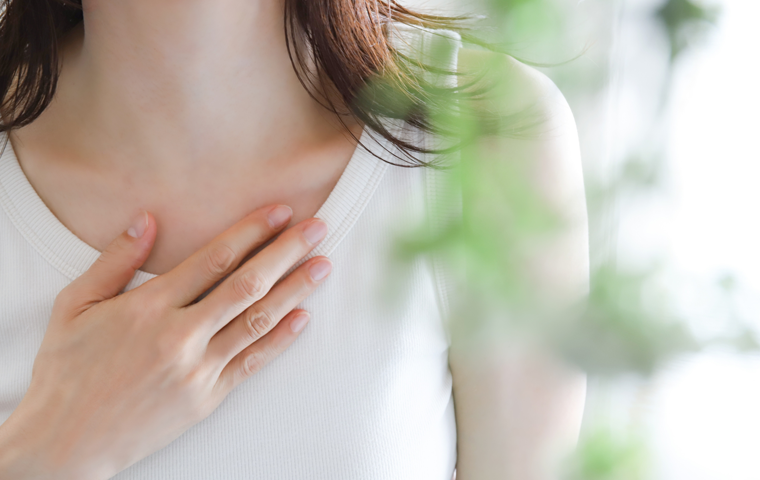Opening the Door to Regenerative Medicine: iPS Cardiac Muscle Sheets
Related Articles
A Historic Turning Point in Regenerative Medicine: World’s First Marketing Application for an iPS Cell–Derived Cardiac Sheet
On April 8, 2025, Japan’s regenerative medicine reached a historic turning point. Cuorips Inc., a biotech venture spun out of Osaka University, announced it had submitted a marketing authorization application to Japan’s Ministry of Health, Labour and Welfare (MHLW) for a “cardiomyocyte sheet” created from human induced pluripotent stem (iPS) cells. This is believed to be the world’s first marketing application aiming to commercialize a regenerative medicine product using iPS cells, and it has generated great anticipation across the scientific and medical communities.
The groundbreaking therapy targets severe heart failure caused by ischemic cardiomyopathy, in which the heart’s pumping function is markedly diminished due to myocardial infarction and other causes. As the disease advances, drugs and surgery lose effectiveness, and heart transplantation often remains the only curative option. Yet Japan faces a severe shortage of donors: according to the Japan Organ Transplant Network, several hundred patients await heart transplants, with an average wait of 1,769 days (nearly five years) as of 2022. Many die while waiting, or must rely on ventricular assist devices. The iPS cardiomyocyte sheet holds the potential to provide an entirely new treatment option unconstrained by donor scarcity.
This application signifies more than the arrival of a new therapy. It marks a historic step as the iPS technology discovered by Prof. Shinya Yamanaka in 2006 moves—after roughly two decades—from basic research in the lab to industrialization aimed at solving concrete societal problems. The fact that a university-born startup like Cuorips is leading this push also suggests the maturation of an ecosystem in which Japanese science and technology translate into new economic value.
The Science of “Repairing” the Heart: How the iPS Cell Sheet Works
The therapeutic core of this cardiomyocyte sheet lies in a refined, dual mechanism that not only supplements weakened myocardium but promotes repair of the heart itself. Built on the foundational discovery of iPS cells by Prof. Yamanaka, the approach is the fruit of more than a decade of persistent translational research led by Professor (Special Appointment) Yoshiki Sawa at Osaka University.
The sheet is made by differentiating healthy donor iPS cells into cardiomyocytes and culturing them into a thin, film-like layer. When surgically attached to the surface of a patient’s heart, two major effects follow. First is the paracrine effect: the transplanted cells release cytokines and other growth factors that act on surrounding myocardium, inducing neovascularization and improving blood flow. With perfusion restored, surviving but impaired cardiomyocytes can re-activate, and the heart’s intrinsic repair capacity begins to operate.
Second, because the sheet’s cardiomyocytes are living, spontaneously beating cells, they can form electrical coupling with the patient’s own myocardium after transplantation, eventually contracting in synchrony with the heart’s rhythm. This provides direct mechanical support to pumping function and improves systemic blood delivery.
A further key to commercial feasibility is the shift from autologous to allogeneic transplantation. While autologous iPS cells (derived from each patient) reduce immune risk, generating them for every individual is enormously costly and time-consuming. Cuorips instead uses an iPS cell stock derived from donors with HLA homozygosity (immunotypes that reduce rejection). With a limited number of such lines, a large share of Japan’s population can be covered, enabling off-the-shelf supply of high-quality sheets more quickly and at lower cost. This is essential if iPS therapies are to move beyond boutique medicine for the wealthy and into broad, reimbursed clinical care—the crucial bridge from scientific breakthrough to societal implementation.
Proof in the Clinic: Trials That Changed Patients’ Lives and the Path to Approval

Supporting this application are solid clinical data demonstrating safety and efficacy in real patients. From 2020 to 2023, an investigator-initiated trial across four institutions led by Osaka University Hospital treated eight patients with severe heart failure. Outcomes were highly favorable: all participants reported improvements in symptoms such as fatigue and palpitations; more than half showed objective gains in cardiac function and exercise capacity; and no serious adverse events related to the sheet were observed.
One emblematic case involved a man in his fifties who had been told that transplantation was his only option. After receiving the sheet in the trial, he made a remarkable recovery and was able to return to playing golf, his hobby. Stories like this give human weight to the numbers and offer powerful hope to patients facing the same illness.
The therapy now proceeds to review by the Pharmaceuticals and Medical Devices Agency (PMDA). Notably, the cardiomyocyte sheet has been designated by the MHLW as a “rare disease regenerative medicine product.” Such designation applies to products addressing conditions affecting fewer than 50,000 patients domestically that lack alternatives and present high medical need, and it confers several incentives—above all, priority review. Whereas the standard review goal is 12 months, priority status can shorten this to 9 months. The acceptance of an application based on eight cases, combined with priority review, indicates that Japan’s regulators are building a flexible framework in regenerative medicine—balancing safety with speed to deliver promising therapies to patients as early as possible. It reflects a national commitment to meeting unmet medical needs and is one reason Japan is emerging as a global leader in the field.
A Japanese Innovation Opening the Future: How Regenerative Medicine Could Transform Health Care and the Economy

Approval of the iPS cardiomyocyte sheet would do more than add a new therapy; it could reshape global care for severe heart failure—moving beyond symptom control and organ replacement to regeneration and repair of tissue itself. A Japanese-born technology could set a new worldwide standard and catalyze parallel R&D efforts.
Economically, Cuorips’ success would validate an innovation model in which university basic research seeds are carried forward by venture companies to practical application—an essential pathway for converting Japan’s scientific prowess into industrial competitiveness.
This momentum parallels shifts in other advanced Japanese technologies, such as the race to commercialize all-solid-state batteries, widely viewed as the leading next-generation battery technology. Major firms—Toyota among them—are targeting practical deployment around 2027–2028, the same window often discussed for broader rollout of iPS-based therapies. With Toyota and Idemitsu Kosan forging strategic partnerships that span from materials development to mass-production techniques, the landscape mirrors the tight academia–industry collaboration advancing iPS applications.
Both iPS therapies and all-solid-state batteries are deep tech endeavors grounded in long-term fundamental science that aim to overturn the limits of existing technologies. Their anticipated, near-concurrent societal deployment in the late 2020s underscores a national strategy to create future core industries through sustained R&D investment.
The marketing application for the iPS cardiomyocyte sheet is thus a starting gun for that larger vision. Its promise extends beyond hope for patients suffering from heart disease: it symbolizes Japan’s new challenge—to shape the future through science and technology—and holds the potential to enrich lives around the world.



